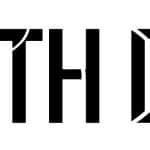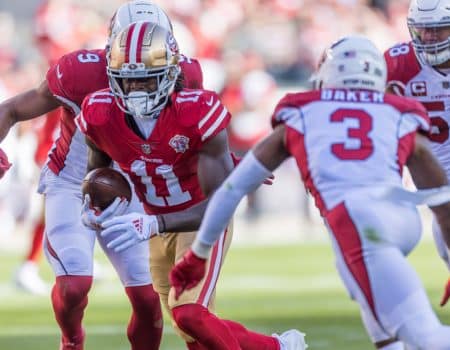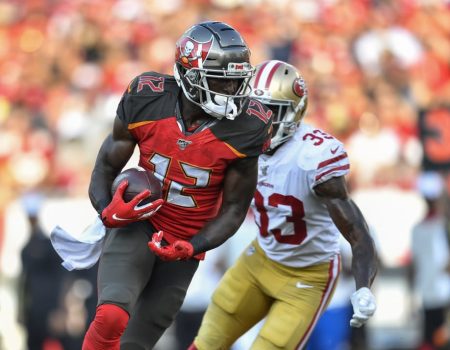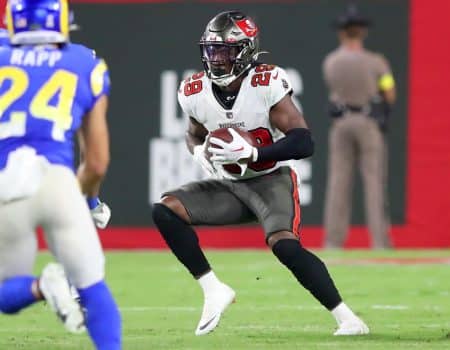Those who cannot learn from history are doomed to repeat it. Someone famous and smart said that. This is why we must study the top fantasy football running back busts from this past season. Follow Mike on Twitter at @mikesully58.
In the last article we looked at quarterbacks deserving of the bust label in 2018. Now it’s our turn to take a peek at the running back position, one that is often considered the staple of a strong fantasy football team. Running backs can often make or break your fantasy season and in 2018 many people found themselves frustrated realizing one of their top running backs was a bust. In fact, there were 10 running backs ranked in the top-24, in terms of ADP, prior to the season who finished outside the top-24 come years end. Essentially you had around a 42% chance to pick a player who let you down.
In this article, just like with the quarterbacks, we will be looking at Average Draft Position (ADP), final ranking, weekly rankings, and previous season performances. To really explore the position in detail I’ve decided to focus on the top-24 ranked running backs of 2018, in terms of ADP, at the beginning of the year. We will also be looking at running backs who played/started at least eight games. This allows us to dive deeper into the position, past guys like Le’Veon Bell, Jerick McKinnon and Devonta Freeman.
Scoring, weekly performances, and rankings are based off of Points Per Reception (PPR) format. Let’s get to it:
Fantasy Football Running Back Busts

1. David Johnson (ARI)
David Johnson entered 2018 with an ADP in the first round (1.03) and near the top of most draft boards as the second or third running back taken. Hopes were high that he could bounce back from the injury that sidelined him in 2017 and produce like he did in 2016, when he was the number one overall running back at the end of the year, racking up around 396 PPR points. Instead, he ended as the 9th ranked running back (10th in Standard) in most PPR leagues in 2018. He still ranked as an RB1, but you got roughly 140 less points than the top two running backs in PPR formats, which is where you drafted him to finish.
In 2018 Johnson managed 234 PPR points with a stat line of 258 rushes, 940 yards, seven touchdowns and 2 fumbles. Through the air he added 50 receptions, 446 yards, and 3 touchdowns. He cracked 100 yards rushing just once in 2018 and averaged 86.63 total yards per game. His total yards per game were significantly lower than other top running backs like Saquon Barkley (126.75), Christian McCaffrey (122.81), Todd Gurley (130.78), and Ezekiel Elliott (133.4). Compared to 2016, Johnson had 35 less rushing attempts, 30 less receptions, 732 less total yards, and 10 less touchdowns. This was a significant drop in production from his number one fantasy season just two years ago. With a significantly less production Johnson produced only four top-12 weekly performances, which made him a top-12 running back only 25% of the games he played in. Johnson did not live up to your expectations on draft day, which means he gets the bust label.
Looking forward: This year’s performance will probably generate a second round ADP in 2019. Also, Kliff Kingsbury is coming to town, and he has been known for his spread style, pass heavy offense in college where running backs weren’t heavily involved. Time will tell what will happen with Johnson, but his 2019 fantasy projections appear to rely on Kingsbury adapting his offense to utilize Johnson and his skill set.
2. Leonard Fournette (JAC)
Leonard Fournette came with a first round ADP in 2018 (1.09) as he was around the ninth running back taken towards the end of round one. After a strong showing as a rookie in 2017, many may have felt he was suitable to be your number one running back. Throughout 2018, Fournette struggled with a hamstring injury that kept him out of a significant chunk of games and he also had a one game suspension. He did manage to start in eight games, but only managed a 41st place PPR finish (36th standard) among running backs (32 spots lower than ADP). Looking back on his season, only starting in eight games might be a strong indicator of a bust. Hindsight is 20-20, though, as you drafted him to be a top-12 running back and he did not live up to that.
In eight games Fournette had 133 rushes, 449 yards, and 5 touchdowns. He also grabbed 22 catches for 185 yards and one touchdown. In his eight games he averaged 78 total yards per game, which is significantly lower from his average of 103.2 total yards per game in 2017. All together he was 800 total yards short of his 2017 campaign and had four less touchdowns. Fournette also managed just three games within the top-twelve running backs (37.5%). When he didn’t get in the top 12, he not only let you down, he produced four games with less than 10 PPR points (9, 4, 5, and 8). It was a tough year for Fournette owners as he often came back and then left again with an injury (or got suspended). Either way you were left wondering what to do with Fournette, which is why he fits our definition of a bust for 2018.
Looking forward: Fournette appeared to work things out with Jacksonville this last season and could be in line for a bounce back year. When healthy he has shown to be quite productive. Overall his injury, attitude, and weight are all factors to keep an eye on as they can all impact his overall fantasy success.
3. Dalvin Cook (MIN)
Dalvin Cook entered the 2018 season with a second round ADP (2.04) and around the 12th running back taken in most drafts. Like other players who made this list, hopes were high based off of his brief 2017 performance. Cook came out of the gate extremely hot in 2017, averaging around 21.25 touches, 111 total yards, and .5 touchdowns before his knee injury in week four. People thought that after he recovered, he would be a strong running back come 2018. Unfortunately, what you got was a 30th ranked running back (31st Standard) in most PPR leagues (19 spots lower than ADP). He did manage to play in more games in 2018 (10 starts, 11 appearances), but still struggled with injuries, which limited his fantasy upside. Cook also managed to finish behind guys like Nyheim Hines (28th), Dion Lewis (27th), Austin Ekeler (25th), and T.J. Yeldon (24th).
In 2018 Cook had 133 rushes, 615 yards, and two touchdowns. He also caught 40 passes for 305 yards, and two touchdowns. Cook averaged 83.63 total yards in his 2018 season, but also had over half of his games with ten or less rushes. The volume just was not there for him this year, which is usually bad news for fantasy production. Cook did manage to pull together a decent stretch towards the end of the season (Weeks 13, 14, and 15), but these were his only top-12 weekly performances (27.3%). Any time you draft a player in the top twelve of their position and they only give you near a 25% return rate you’re often left wondering what to do.
Some people might have been able to adjust their lineup and pick up a solid waiver wire running back, add Latavius Murray, or make a trade. Others may not have been so lucky. The fact of the matter is you drafted Cook to be your number one or number two running back.
Looking forward: Minnesota made it clear they wanted to get the run game going when they switched offensive coordinators during the season. I think this will benefit Cook as in the seven games he had 15 or more touches (rushes and receptions) he has averaged 116.4 total yards per game. Cook, barring injury, has potential to bounce back next year with the focus switching to running the ball in Minnesota.
4. Royce Freeman (DEN)
Royce Freeman entered the 2018 season with a third round ADP (3.05) and was around the 15th running back taken off most draft boards. Many people were hoping to get a solid return from Royce Freeman (2nd rookie RB behind Saquon Barkley). Freeman also had the college resume to create some significant hype. In four seasons at Oregon he never had less than 1,000 thousand total yards and 10 touchdowns. He also had three seasons over 1,500 total yards. Hopes were high for another rookie darling, but Freeman ended up taking a back seat to Phillip Lindsay in Denver. He ended the 2018 season with a 47th ranked running back (45th standard) in most PPR leagues (32 spots lower than ADP) in 14 games and eight starts. Some running backs Freeman finished behind were Frank Gore (46th), Theo Riddick (43rd), Wendall Smallwood (42nd), and Doug Martin (40th).
In 2018 Freeman managed a stat line of 130 rushes, 521 yards, and 5 touchdowns. He also caught 14 passes for 72 yards and one fumble. He managed a rough 42.4 total yards per game in back up duties behind Lindsay. This simply didn’t match up with his top-20 ADP and he only had one top-20 finish (12.5%). This was in Week 17 where he finished as the 8th ranked running back after stepping in for Lindsay.
Now you may have cut ties with Freeman throughout the season, but you can’t discount the fact that you invested a third-round pick on him. Especially in the third round where you could have grabbed a wide receiver like Mike Evans (3.01), Stefon Diggs (3.02), T.Y. Hilton (3.03), Amari Cooper (3.07), and Adam Thielen (3.09). Or a tight end like Travis Kelce (3.04) or Zach Ertz (4.03). Either way you took a shot on Freeman in the third round and he was a bust.
Looking Forward: Freeman’s got the skillset to be a strong running back, but his future in Denver may be dependent on the continued success of Lindsay. Denver would be expected to go with Lindsay as their starter after his impressive season, but Lindsay is a smaller running back and is dealing with some injuries already. This may lead to Freeman being somewhat active as a backup. Overall his ADP will significantly drop, but he does have some stash appeal as he would be expected to get the work if Lindsay were to miss time.
5. Alex Collins (BAL)
Alex Collins entered most 2018 fantasy drafts with a third round ADP (3.07) and approximately the 17th running back off draft boards. Previously, Collins had bounced around the league, but began to catch the eyes of fantasy football enthusiasts last year. In 2017 he ended up starting in 12 games and produced solid fantasy numbers as he had 212 rushes, 973 yards, and six touchdowns. He also caught 23 passes for 187 yards. He went from a strong waiver wire play in 2017 to a being drafted as a top-20 running back in 2018. Unfortunately, Collins did not pan out in 2018, as he finished as the 45th ranked running back (43rd Standard) in PPR formats (28 spots lower than ADP). He finished behind Theo Riddick (43rd), Doug Martin (40th), and Mike Davis (36th).
In 2018, Collins appeared in 10 games for the Baltimore Ravens and started each one of those games. He struggled with fumbles, injuries, and a crowded backfield at times. He had 113 rush attempts, 411 yards, seven touchdowns, and 3 fumbles. He also caught 15 passes for 105 yards and two touchdowns. In his 10 games, Collins had a measly 51.6 total yards per game, which was 45 yards less per game than 2017 with 2 less starts. Although he did have more touchdowns this year, he fell 644 total yards short of his 2017 totals. This helped drop him well out of the top-20 running backs by years end. Week to week, Collins managed to crack the top-20 ranking twice (20%) throughout the 10 games he started. Overall you were hoping Collins picked up where he left off, but you were left with just another running back bust.
Looking forward: In 2019 Collins will be a restricted free agent and Javorius Allen and Ty Montgomery will also be unrestricted free agents. With Gus Edwards and Kenneth Dixon under contract, it will be interesting to see what Collins future may look like. Baltimore appears to have a backfield that will still be very crowded, limiting Collins from a fantasy perspective. It’ll be important to keep an eye on what goes on in Baltimore throughout the off-season and pre-season to get an idea on Collins.
6. LeSean McCoy (BUF)
LeSean McCoy entered 2018 with a third round ADP (3.06) and around the 16th overall running back taken off the board. Considering what he has done throughout his career this was probably considered a bargain for a typically strong fantasy football player. From 2010 to 2017, McCoy has averaged a 7.75 finish amongst running backs in PPR formats. This includes three top 3 finishes (2010, 2011, and 2013). He also has not finished worse than 16th (2012 and 2015). Essentially you were hoping for a reliable return in grabbing McCoy in the third round. Instead you ended up with the 39th ranked running back in 2018 (23 spots lower than ADP).
In a disappointing season McCoy started in 13 games and had 161 rushes, 514 yards, and 3 touchdowns. He also had 34 receptions for 233 yards. He averaged 57.5 total yards per game and had 12 games where he had less than 100 total yards. Even worse, McCoy had seven games with less than 50 total yards. Compared to just one season ago, McCoy had 839 total yards less than his 2017 campaign. He also was under 1,000 total yards and he had his lowest attempts per game since his rookie year (2009). His yards per attempt was the lowest of his career as well (3.2). McCoy managed to crack the top 20 running backs just three times (23%). Overall it was a down year for McCoy, which could have a lot to do with the offensive struggling all together in Buffalo.
Looking forward: McCoy will be 31 years old entering the 2019 season, which is the last season under his current contract. McCoy also has 2,821 career touches (2,346 rushes and 475 receptions), which places him 31st in all-time rushing attempts for running backs. This places him fourth amongst running backs who played in 2018 behind the likes of Marshawn Lynch, Adrian Peterson, and Frank Gore. Overall, I think McCoy has hit the point where he isn’t the same running back. His ADP will significantly drop going into 2019 and it would be tough to rely on him moving forward.






No Comment! Be the first one.